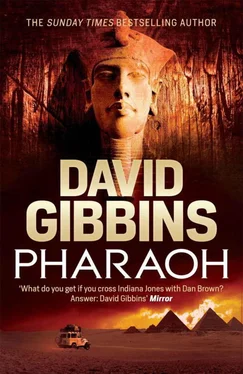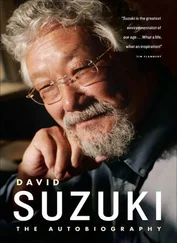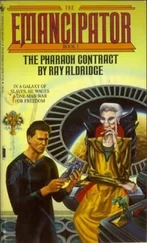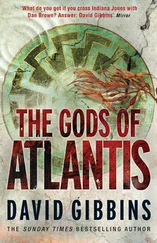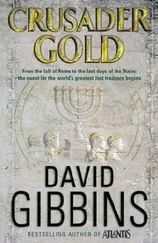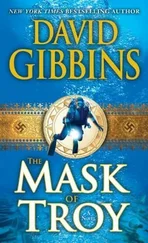They moved away to give the camel some space, and Jack gestured over at the two women. ‘Here they come now.’ Lanowski had also spotted them, and was struggling out of his contraption. Hiebermeyer waved them towards the pyramid. ‘Come on. I’ll talk as we walk.’
‘Akhenaten,’ Costas said, struggling to keep up. ‘Why we’re here.’
‘Right,’ Hiebermeyer replied. ‘First we find that Akhenaten inscription at Troy about the frontier defences, mentioning Semna. Then you and Jack finally decide to find the sarcophagus of Menkaure. High time, if you ask me. On the back of that, I decide it’s time to have a look at this pyramid again. Meanwhile Aysha begins excavating at Semna, and we start to find evidence of Akhenaten’s expeditions into the Nubian desert. I never thought there would be any connection between Akhenaten and the pyramids. But I should have known better. He was a consolidator, not an expander. He wanted not to export his vision like the jihadists, but to bring it back to the Egyptian people. And not to the Egyptian royal capital where he had grown up – Thebes, a place he had left in disgust, with its priests and falsehoods – but to an older, purer place, where the Aten could be seen every day shining through the forms that had been created by his ancestors, that would take on a new meaning under his control. To the pyramids at Giza.’
Costas was almost running alongside him to keep up. ‘But before Jack found that plaque from the Akhenaten depiction with the pyramids on it, what gave you the connection with this place?’
‘It’s what I always tell my students. It’s what I told Aysha when she first came to me. Always go back to the original texts. And I don’t mean the ancient texts. I mean the books and manuscripts of the first European explorers in Egypt, since the eighteenth century. A huge amount has been lost since then: wall paintings destroyed after tombs were opened and exposed to the elements, inscriptions hacked away and looted. The journals of the first archaeologists are a unique resource, often recorded in meticulous detail.’
Jack peered at him. ‘Colonel Vyse?’
Hiebermeyer beamed, stopped, took three worn volumes out of the satchel he was carrying and laid them side by side on the sand. ‘ Operations Carried on at the Pyramids of Gizeh in 1837 .’
‘The book that contained the clue to the sarcophagus of Menkaure,’ Costas said.
Hiebermeyer nodded enthusiastically. ‘Jack and I dreamed of discovering that sarcophagus when we were at boarding school. It was something we could both be passionate about, me as a budding Egyptologist, Jack as a diver. And then our Cambridge tutor Professor Dillen gave me this first edition of Vyse’s work as a graduation present. I pored over every word of it, but then set it aside and only returned to it earlier this year when Jack told me about that tantalising note about the wreck of the Beatrice slipped into the edition of the book he had been shown in England. I knew that something about those books had been niggling at me since I’d started to think about Akhenaten again at Troy, and as soon as I opened them I realised what it was. Vyse hadn’t just investigated the pyramids at Giza. He’d travelled extensively up the Nile as far as the great temples at Abu Simbel, and much of the first volume is taken up with an account of his discoveries. What I’d completely forgotten was that he went to Amarna.’
‘Akhenaten’s new capital,’ Costas murmured.
Hiebermeyer opened one of the volumes to a bookmarked page. ‘At that date Amarna was scarcely known. After Napoleon had invaded Egypt, his Corps de Savants visited the site in 1799, and Sir John Gardner Wilkinson first surveyed it in 1824. But Vyse gives us a unique record of tomb inscriptions he found there several years later. That was what had been niggling at me. When I read it again, I could barely contain my excitement.’
‘Spill it, Maurice,’ Costas said.
Hiebermeyer pushed his glasses up his nose and cleared his throat. ‘Vyse tells us that the interior consisted of three small apartments, and appeared to have been covered with paintings, by then almost entirely defaced.’ He put a finger on a section of text and read it out. ‘“Processions of prisoners of a red complexion, but with the features of Negroes, were amongst the figures that could be made out; also a solar disc with rays, like that over the entrance, and beneath it the figures of a king, and of a queen dressed in high caps; the whole being surrounded with various hieroglyphic inscriptions.”’
‘That sounds very like the imagery in the crocodile temple,’ Jack said.
‘Wait for what comes next,’ Hiebermeyer said. ‘“Over the door of this tomb, a solar disc was inscribed, from which rays with hands at their extremities extended as from a common centre; two figures, one of them apparently that of a king, were represented as worshippers in a kneeling position; and on each side hieroglyphics, and circles, or discs were introduced.”’ He pointed to a small drawing that Vyse had included in the text, showing the image he had just described. ‘Take a look at this. The lower part of that depiction, below the kneeling worshippers, forms a truncated pyramid, like a large altar. But if you extend the sides upwards, they reach the Aten symbol and you have a complete pyramid. Seeing that, I worked through all of the known pyramids of Egypt. By Akhenaten’s day, many of the lesser pyramids would already have been crumbling, and were a long way from the main administrative centres. So it had to be one of the Giza pyramids; it would have been entirely consistent for Akhenaten to choose one of them to celebrate his new god, in the centre of the most sacred ancient site in Egypt. And I doubted whether it would have been one of the two larger ones, which were still associated with the cult of Khufru and his son and would have been far more difficult to modify to Akhenaten’s purpose. So it had to be the pyramid of Menkaure.’
‘And that was confirmed for you when we found that slab packed inside the sarcophagus showing Akhenaten,’ Jack said. ‘Something that Vyse may well have taken from inside the burial chamber too, from a wall sculpture that has since disappeared.’
‘Yes, but that wasn’t my only clue.’ Hiebermeyer bounded to the edge of the pyramid, and put a hand on one of the huge slabs of stone cladding the lower courses of the structure. ‘You see these?’ he said. ‘Granite, brought all the way from Aswan near the border with Sudan. Each slab weighs at least thirty tons. An incredible feat of transport, bringing them all the way downriver and then dragging them across the desert to this place, more than four and a half thousand years ago.’
‘But the cladding was left incomplete,’ Costas said.
‘The standard view is that the cladding was abandoned at Menkaure’s death, but the exterior was then completed in mud brick before the pyramid was dedicated to his father.’
Jack peered at Hiebermeyer. ‘I know that look. You have another theory?’
Hiebermeyer stared at him. ‘Where else is there granite in this pyramid?’
Jack paused. ‘If I remember correctly, the core of the pyramid is built of local limestone quarried here on the plateau, except for the cladding and some stone around the burial chamber, which is also Aswan granite.’
Hiebermeyer slapped his leg in excitement. ‘Exactly. And that’s where I made my great discovery. While you two and Sofia were in your submersible finding the sarcophagus that once lay inside the pyramid, I was taking Little Joey for a sniff around the antechamber. You’ll be astonished at what I found, Jack. Astonished .’ He turned to Lanowski. ‘Jacob, can we see the 3-D isometric view?’
Читать дальше
